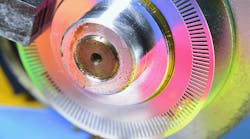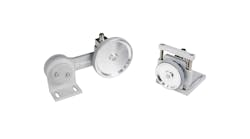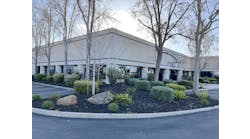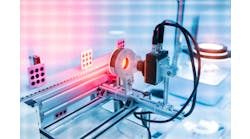A Control Design reader writes: The operating environment for our machinery is rough on encoders—contaminants, moisture, vibration and temperature. I’m not sure if it’s just the conditions, but it seems our encoders are failing at an abnormally high rate. The majority of failures occur between three and four years of use, but a few have been less than two years old. We regularly check the output voltage with a digital multimeter to make sure it matches the input, but are there other ways to verify an encoder’s functioning properly? It’s easy enough to diagnose shaft runout when the encoder overheats from bearing failure. How do we diagnose other failures? I’ve heard about bearingless encoders. Is that a viable option for environments like ours?
Also read: Contact-free sensor solutions for harsh environments
Encoder vs. resolver
I would start by reviewing the operating environment and determine if the encoders are appropriate for the application. Does it have the correct IP rating? What is the temperature rating of the encoder? What level of vibration will it be exposed to? You state the encoder is exposed to contaminants and moisture. If that is the case, you want an encoder with a minimum of an IP64 rating. Temperature can be a bit trickier. Some encoders are only rated up to 60 °C, but you shouldn’t have trouble finding one rated for up to an 85 °C operating environment. If the operating environment is above 85 °C, you will need to do your research to find an encoder that can manage such temperatures. You also need to address the bearing failure. Do you have shaft misalignment that could be better managed with a proper coupler? Does the encoder manufacturer use inferior bearings to save money? Remember not all encoders are manufactured to the same standards, and this is definitely a product where the phrase “you get what you pay for” certainly applies.
Just to switch it up a bit, you may want to consider a different technology, such as a resolver. The resolver removes the electronics from the sensor and puts the resolver decoder in the panel with the rest of your control. This will eliminate failures to the electronics caused by temperature, moisture and vibration. Resolvers are often used in applications where high temperature and/or high shock and vibration are unavoidable. You can get a resolver with a mechanical package, similar to your encoder, or you can go with a frameless, or bearingless, resolver, if you decide that is a better path for your installation.
Matthew Tellier / product manager / Advanced Micro Controls / www.amci.com
Identify wear: oscilloscope and grease condition
A multimeter is helpful to check voltages, but the best way to ensure an encoder is functioning properly is to use a portable handheld oscilloscope that gives you the full signal picture and detailed information.
You can use also a simple quadrature counter with an adapted cable assembly to connect the encoder. Use the power supply provided by the counter and check if it matches according to the native resolution. For flying leads, just add some clamps on the wires to make the test easy.
To diagnose failures in general, lost pulses, phase shift or deviations on the duty cycles are indications of bearing block wear or dust pollution on the encoder’s optical disk or sensing chip. Detection is possible with the counter, but, to be more accurate, an oscilloscope will be helpful.
This wear can be easily detected by slightly moving the encoder housing in different directions to see mechanical clearance. Wear is mostly correlated to a leakage current, wearing the ball bearings and drying the bearing lubricant, or due to a dust pollution of the lubricant. In both cases, the best approach is to remove the seals—radial seal and/or bearing shields—and quickly analyze if the grease contains a lot of particles, such as dark and dry paste, or if the viscosity is higher than expected.
Bearingless encoders are ideal for mostly clean environments with very limited permissible mounting misalignment. If you can properly protect the device, it’s an interesting solution. Be cautious though, on synchronous or asynchronous heavy motors, the mounting on the rear flange can be very difficult. If you are considering magnetic encoder solutions, you also need to take care with all the metallic particles that could be accumulated on the ring, as they will affect the signal.
Jean-Marc Hubsch / engineering manager, encoders and position sensors / Sensata Technologies / www.sensata.com
Bearingless encoders
When encoder signals appear incorrect, the most common response is to assume the fault lies with the encoder. However, many issues can be the result of mechanical or environmental factors such as loose couplings, shorted wires or other system-related issues. Many of these issues can be corrected with a bit of troubleshooting. Start by viewing the signals on an oscilloscope, if possible. This is the best diagnostic tool to use for this application. Leave the wiring to the encoder untouched and connect to the readout device end. Be sure to swap the trigger from one channel to another, as it can provide important insight.
Bearingless encoders are often used in applications such as outdoor applications where contaminants, extreme temperatures, shock and vibration are present. Without bearings included in the encoder design, this also means there is one fewer item that can fail over time as a result of wear. Magnetic sensing technology is far less susceptible to dirt, grease or water impacting the quality of feedback, especially compared to a shaft encoder using optical sensing technology where these contaminants can impair the optical encoder’s code disc.
Daniel Weiss / senior product manager / Newark / www.newark.com
Waveform/pulse rate
There are myriad issues that come with using encoders in any environment. I am not sure that your issues are coming from the wear components on the encoder, but there are several options for non-contact encoders from several brands. These will work in the harshest of conditions and often work better than traditional options in abrasive-dust and high-vibration applications.
To look at troubleshooting an encoder there are several issues to consider, and output voltage is likely the least important. If you are sending a pulse input to a PLC or panel meter, then the turn-on voltage is likely well below the nominal voltage of the encoder. The more likely problem is the waveform/pulse rate from the device. Depending on the type of encoder you are using, the way a pulse is generated varies. A good way to check is by using an oscilloscope to see the interval between the pulses. You know the specifications of your encoder, allowing you to calculate if everything is on track or where things are going wrong. If are able to see pulses but at an incorrect rate, then start looking for mechanical issue like bearing slip.
Mark Russell / tech application support manager / Allied Electronics & Automation / www.alliedelec.com
Physical test and interface diagnostics
When evaluating a rotary encoder, there are certain physical tests and interface diagnostics to determine whether the device is still functional. The condition of the bearings can be checked by looking at the shaft runout. Monitoring input voltage can be difficult, as voltage spikes can occur when the device is operating and not being monitored. Especially with mobile equipment applications, it is important to know the temperature and voltage limits of the rotary encoder, as exceeding them can cause damage.
The device’s interface can provide diagnostic capabilities depending on the application. IO-Link devices can display both the temperature of the device and the hours of operation. The number of revolutions per single full turn of the device can also be checked by marking the shaft and performing one full rotation. Then compare the number displayed with the count specified for the rotary encoder. Failure diagnostics also rely on good training of equipment operators. They must be able to relay the failure condition to effectively troubleshoot the device.
Bearing-free rotary encoders eliminate many physical condition failures where rotary encoders are subjected to strong vibration and/or high shaft loads. These devices tend to be better sealed, as they limit the number of moving components. The result is a less expensive, more durable device that is suitable for some extreme applications.
Ron Schlebusch / central technical sales support, factory automation / Pepperl+Fuchs / www.pepperl-fuchs.com
Smart encoders
As you may already know, selecting the proper encoder based on the proper IP rating for the environment and application is vital to the longevity and efficiency of the encoder, and there are models with rugged, enhanced construction for use in the more demanding industrial environments. However, smart EtherNet/IP-enabled encoders can deliver diagnostics and send notifications, which allow for more predictive maintenance, alerting you to issues before the encoder fails. Bearingless encoders are also an option but not necessary for your operating environment.
Aamna Jangda / product marketing specialist / Rockwell Automation / www.rockwellautomation.com






